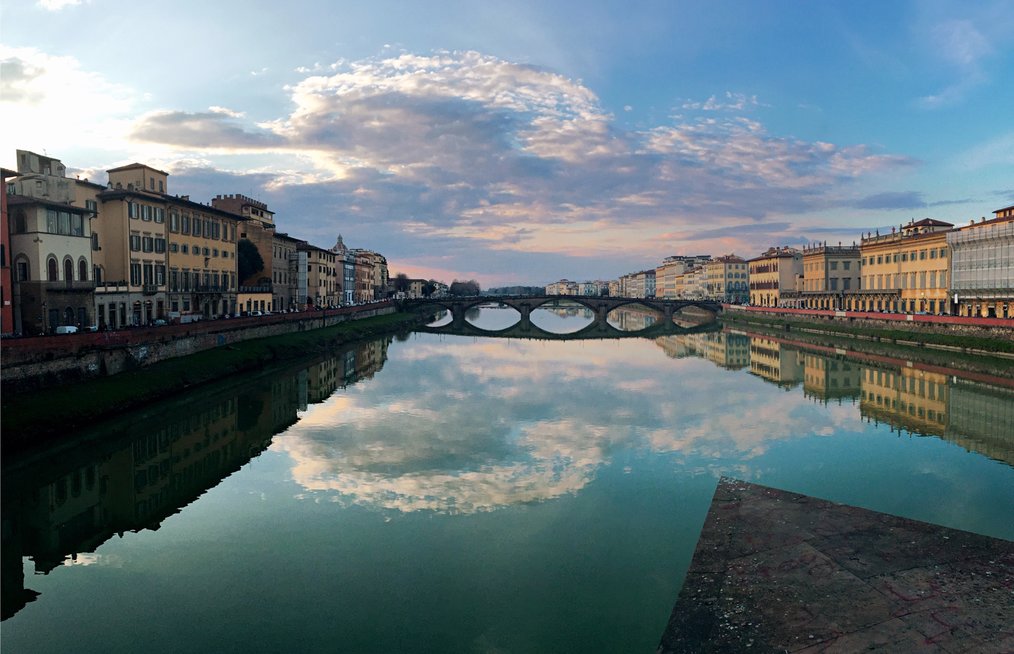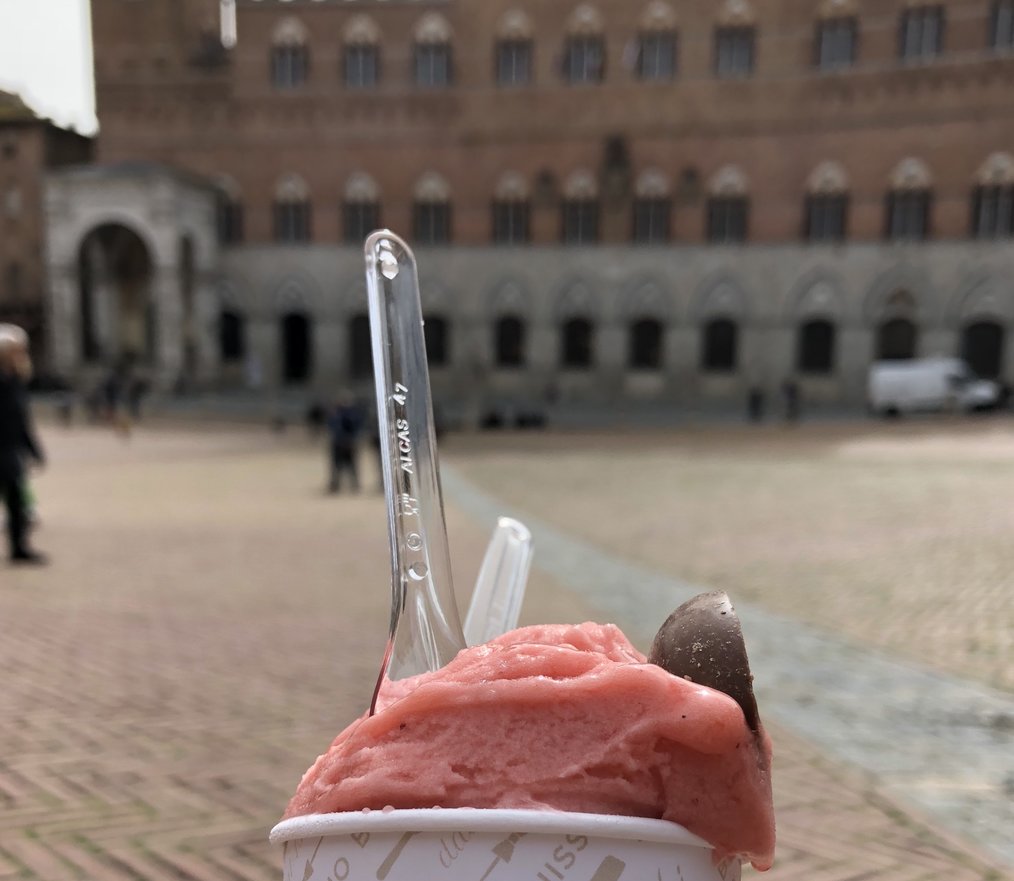10 Things to Know Before Studying Abroad in Italy
Read on to find out 10 important things to know before studying abroad in Italy!

Italy just seems familiar. Whether you’ve experienced it through movies, literature or just your gelato obsession, the country’s reputation as a multi-sensory wonderland precedes it.
When you arrive to study abroad in Italy, you’ll find that many of these preconceived notions will indeed be very much true. The food is incredible, the landscapes achingly are beautiful, the history undeniably rich, and the atmosphere truly intoxicating.
But of course Italy is still a foreign country, so there will be a few things that all those viewings of Roman Holiday didn’t totally prepare you for. When I studied abroad in Florence, I thought the two years I had spent studying the language in the States meant I was fully prepped for my semester abroad. Was I right? No! Of course being able to speak and understand the language was in many ways helpful, but there was much more to learn and explore, once I touched down in Tuscany.
Here are 10 things you’ll want to know before studying abroad in Italy.
Italy is Easy to Navigate
One of the best parts of studying abroad in Italy is taking advantage of being in Italy! While studying in Italy, be sure to plan weekend trips throughout the country to enjoy the different experiences each city has to offer.
The country’s train system -- encompassing just over 15,000 miles of track -- is an efficient and relatively cost-effective mode of travel, with Milan, Rome, and Florence serving as major hubs that can bring you to countless cities throughout the rest of the country. It’s easy to take day or weekend trip to other regions or to travel from the city to the seaside. (In fact, Italy’s first railway was the Napoli-Portici line, built in 1839 to connect the royal palace of Naples to the Mediterranean.)
Train tickets can be purchased online in advance, or directly at the stations, most of which are themselves bustling sights to behold. Trenitalia has special offers on tickets, and if you plan to be traveling a lot, it’s worth buying the Green Card. Available to travelers between the ages of 12 and 26, this 40 euro card gets you 10% off of base fares and 25% off on international travel. Andiamo!
English Is Widely Spoken
If you haven’t brushed up on your Italian before arriving in Italy, don’t worry. English is widely spoken in major cities -- Rome, Florence, Milan, Venice, and Bologna -- and in many smaller towns too. Most menus, travel schedules and museum guides have English options, meaning you won’t end up hungry, lost or uncultured if you don’t fluently speak the language.
... But Learning Some Basic Italian Courteous (& Helpful!)
All that said, a good rule of thumb when traveling in any foreign country is to learn some basics of the language. Memorizing common greetings and questions -- hello, good day, where can I find..?, etc. -- will smooth your travels and ingratiate you to the locals. Any Italian guidebook will have a list of basic, essential phrases.
Remember, Italian social codes require one to use the formal tu/lei tense when meeting someone for the first time or when greeting older people or those in positions of authority. When meeting someone for the first time, especially among men, it’s common to shake hands, although people that know each other well will often kiss hello and goodbye. Such kissing -- on both sides of the cheek -- is more common in southern Italy, where it is the de facto greeting even among strangers.
Want to learn Italian while studying abroad? Here's what you need to know.
Summer is Tourist Season

Given Italy’s popularity among travelers, there will always be a degree of tourism year round, but when summer comes, tourists descend especially hard, packing the streets of Rome, Florence, Venice, forming long lines at museums and attractions and clogging the roadways of Cinque Terre and the Amalfi Coast in tour buses.
With June, July, and August serving as peak tourist season, you might consider studying abroad in the fall, when the weather starts to turn and tourist season is waning. Alternatively, if you are in Italy in the spring when tourism is picking up, which it typically does around April, consider using the first part of the semester to explore your host city and then using your weekends in the second half of the semester to travel to less densely populated parts of the country.
Southern Italy is Less Explored but Just as Beautiful
With the exception of Rome and the Amalfi Coast, Italy’s primary, and most famous, tourist destinations are in the northern half of the country. But the southern half of Italy is rich in culture, food, gorgeous landscapes and UNESCO world heritage sites including the breathtaking Sassi district of Matera and the trulli of Puglia. Like northern Italy, the southern half of the country is well-connected by the train system. You’ll likely find that cultural traditions are more firmly upheld in these more rural regions. That said, the locals are less likely to speak more than basic English, so be sure to brush up before heading down.
Travelers who want to go all the way down can trek to Sicily, the Mediterranean’s largest island situated just off the coast of the mainland boot tip. Sicily is a large island, so maximize your time by choosing just one or two regions to explore. On the southern part of the island, Agrigento's Valley of the Temples Archeological Park is a group of Greek temples dating from the 5th - 4th centuries BC that's also got UNESCO designation.
Avoid Being the Drunk American
Yes, going out for a few drinks with your classmates is a fun way to pass an evening, but try not to over-consume. Public spaces in Florence and Rome especially have been overrun with wasted American students engaging in all sorts of unsavory behavior. Don’t go there. Public intoxication is tacky and can be seriously dangerous, leading to injury, robbery and other unpleasant situations better off avoided.
While many bars in the major cities offer pub crawls catering to Americans (many of whom are too young to legally drink in the states) Italian culture in general doesn’t embrace American-style binge drinking, so know your limits and abide by them. You’re representing your country!
The Skiing & Snowboarding is World Class
When you think of Italian landscapes you probably envision the rolling hills of Tuscany and stretches of pristine coastline, but the fact is that Italy is also a world-class skiing and snowboarding destination.
Most of the major resorts are situated in the Italian Alps and Dolomites located in the northern part of the country. These areas make for easy day or weekend trips from Florence, Bologna, Venice, and Milan and other hubs. Equipment rental is generally inexpensive, must less so than in similar destinations in France and Germany, and runs range from beginner to expert. The mountain views are breathtaking and the air is fresh.
Ski season typically runs from October through the spring, with many resorts extending their seasons with artificially made snow.
Prepare For Different Pace of Life

One of the biggest draws of Italy is its operating speed, which is typically slow. Those of us coming from warp-speed America will find that time really does expand in Italia. Meals are leisurely, downtime is worked into the day, and travel schedules are often thrown off at the last minute due to transit strikes, which are common at train stations and airports.
Prepare yourself by doing your errands in the morning or evenings when businesses are sure to be open. (You’ll find that more businesses close during the midday in smaller towns.) Should your travel plans be upended by a strike, try to laugh it off and make alternative arrangements by renting a car or just finding adventure wherever you are. While these occurrences can certainly be frustrating, you really are having a typical Italian experience!
Restaurant Etiquette is Slightly Different
Remember what I just shared about the slow pace of life in Italy? This applies especially to dining out. Italian waiters are famous for letting diners take their time at the dinner table --you’ll most likely have to flag them down when you’re ready to order and when you want the check.
Unlike many places in America, Italian waiters are paid a living hourly wage, so tipping isn’t common or expected. While many bars and restaurants offer aperitivo specials -- discounted drinks and snacks around happy hour time -- most Italians don’t sit down for dinner until later in the evening.
It's Respectful to Dress Modestly at Holy Sites
Italy is packed with churches, from tiny underground crypts to stunning, sprawling cathedrals to The Vatican, the home of the pope and the heart of the worldwide Catholic Church. Even if you’re not religious, these sites are incredible testaments to art, engineering, history, human ingenuity, and faith.
It’s respectful to dress modestly when touring these holy places. This means wearing pants or a long skirt that covers the legs down to the ankle, along with long sleeves or a wrap that covers the arms, shoulders, and chest. Guards at The Vatican have turned away tourists for not following this dress code, so be sure to abide. Alternatively, the Vatican gift shop sells plastic cloaks you can wrap around yourself if you have no other appropriate ensemble.
I found Italy was an ideal study abroad destination in the sense that it was accessible and intuitive, but different from the States in ways that were engaging, dynamic and sometimes challenging. Being there was an absolute dream, and also forced me to grow. This type of real-world education is certainly as valuable as all of the rich history, art, language and culture you'll be learning about while in the country. Ti diverti!
